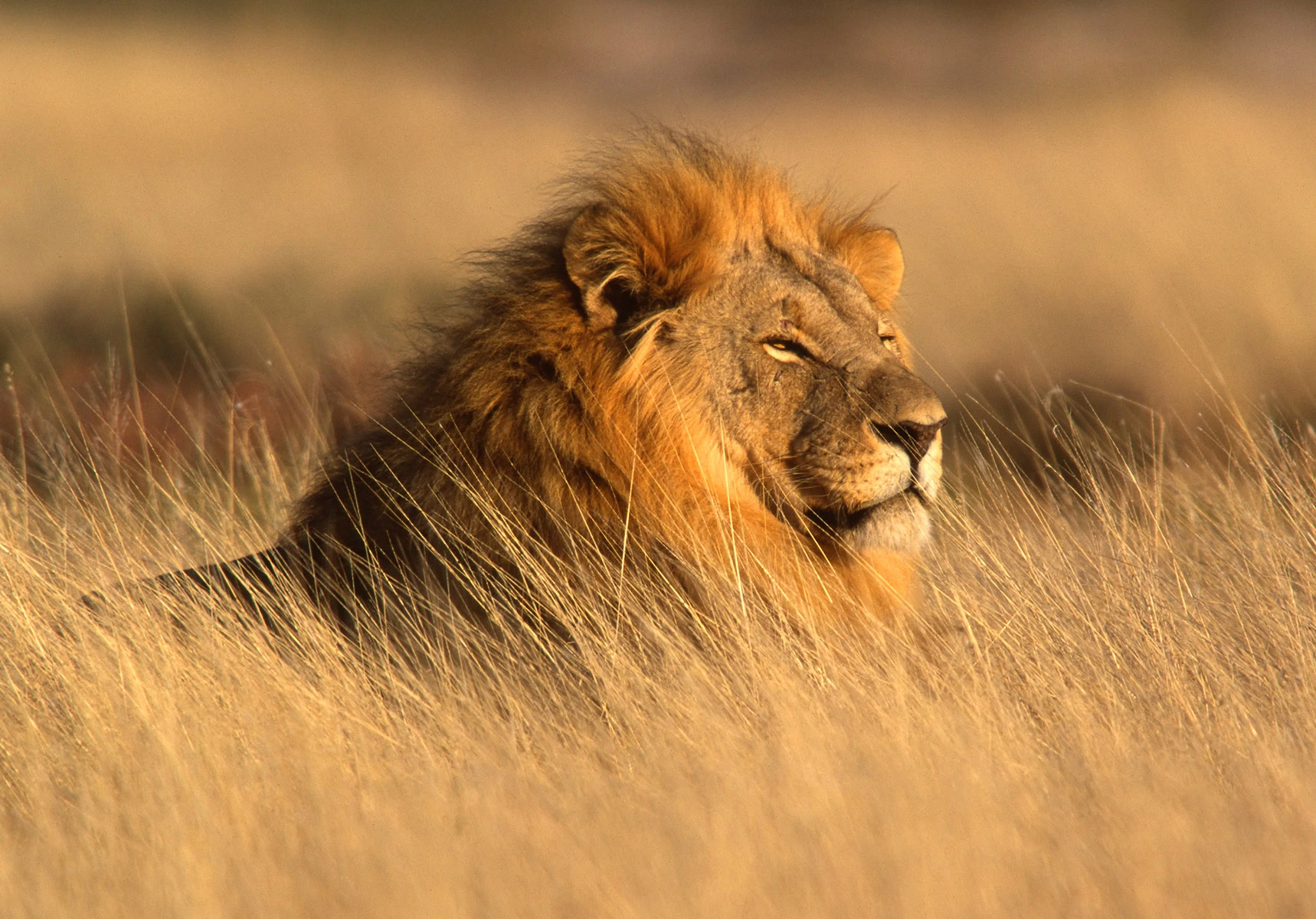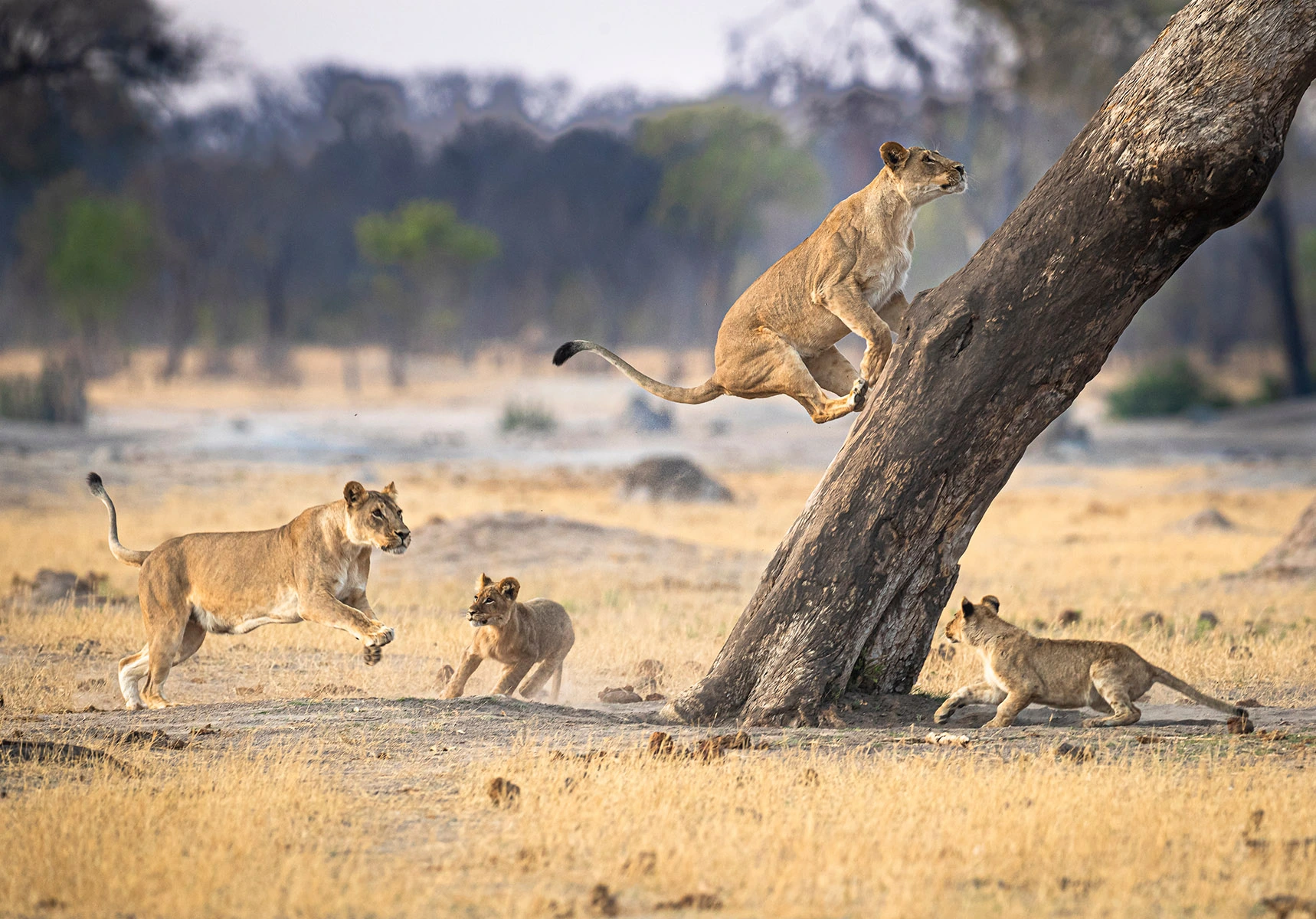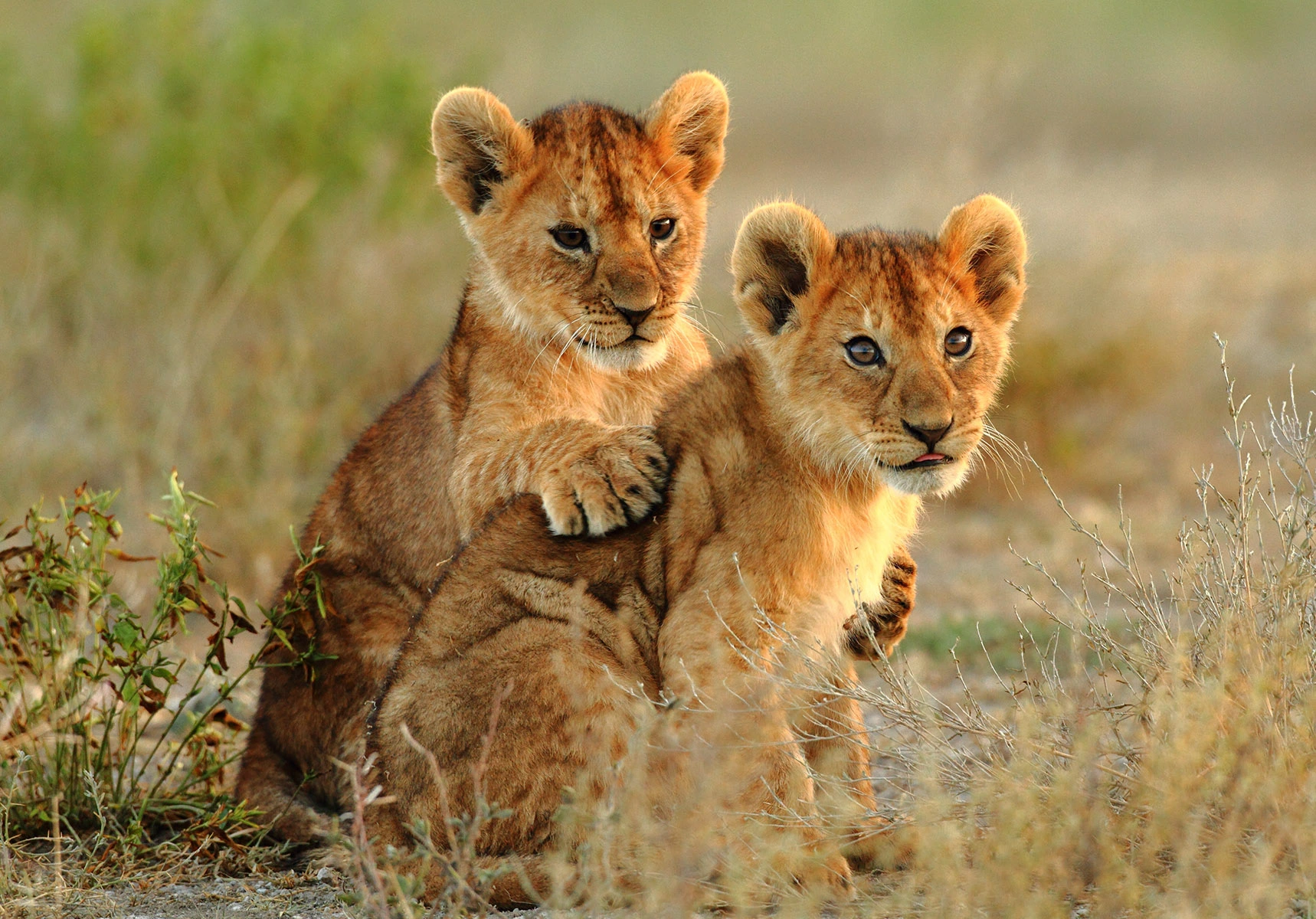Say hello to Leeu! His name means ‘lion’ in Afrikaans—a name as majestic as his magnificent mane! Leeu is a true king of the savanna, and he’s here to roar his way into your heart.
Leeu’s story spans continents, from the sweeping plains of Africa to ancient forests far away. With a lineage that stretches back millions of years, he’s a proud reminder of the lion’s incredible journey through history.
These days, Leeu’s focus isn’t just on ruling the savanna—it’s on protecting it! He dreams of a world where his roaring playground stays wild and free for generations to come.
So, are you ready to hear Leeu’s mighty roar? Let’s take a step into his kingdom and find out!
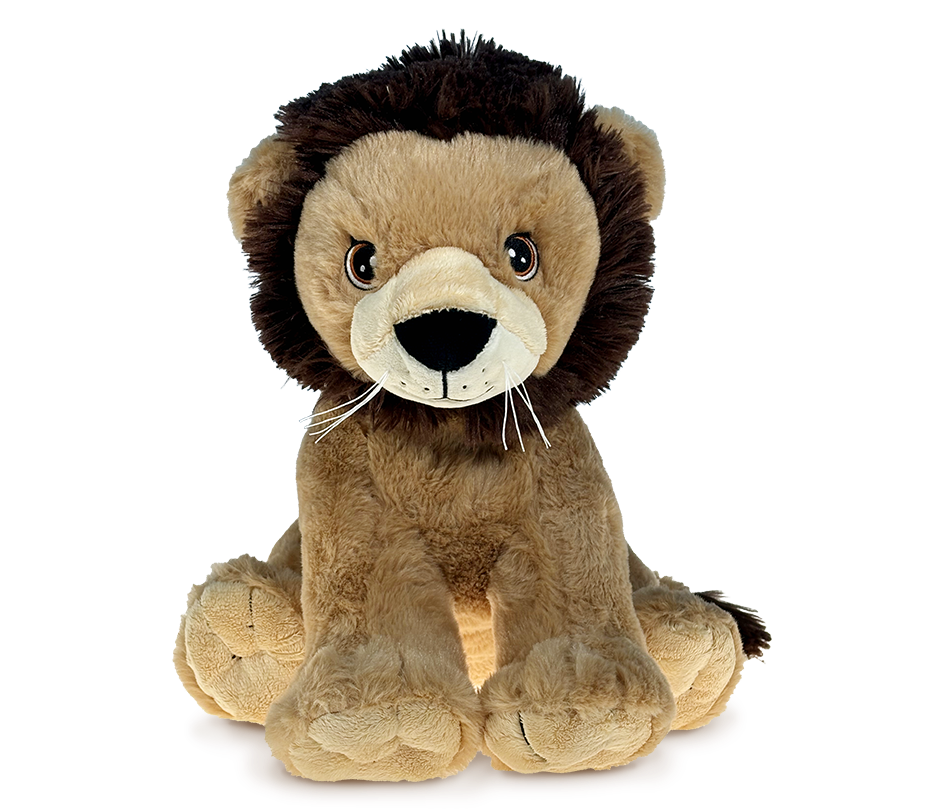
Origin
Africa (e.g., Kenya, South Africa, Tanzania) and a small population in India (Gir Forest).
Lions predominantly inhabit grasslands, savannas, and open woodlands.
Risk Level
Medium to high, as lions face threats such as habitat loss, human-wildlife conflict, and poaching, though conservation efforts have stabilized some populations.
Species
Two main subspecies: African lion (Panthera leo leo) and Asiatic lion (Panthera leo persica). Populations and threats vary between subspecies and regions.
Status
Lions are classified as vulnerable by the IUCN Red List, with the Asiatic lion being critically endangered. Efforts include protected reserves (e.g., Serengeti, Gir Forest) and anti-poaching measures to safeguard their numbers.
Why is ‘Leeu’ important to the eco-system?
Well, lions like Leeu are nature’s protectors! By hunting herbivores, they help keep populations in balance, which prevents overgrazing and lets grasslands thrive – kind of like lawnmower mechanics.
But that’s not all! Leeu and his pride are also key players in the savanna’s food web, like a puzzle piece that keeps everything connected. Without lions, the whole balance could tip, and the savanna might not be the same.
That’s why protecting Leeu’s home is so important—not just for him, but for all the animals and plants that share the ecosystem. Plus, healthy savannas store carbon and help fight climate change. So, let’s roar for Leeu, the king of balance in the wild!
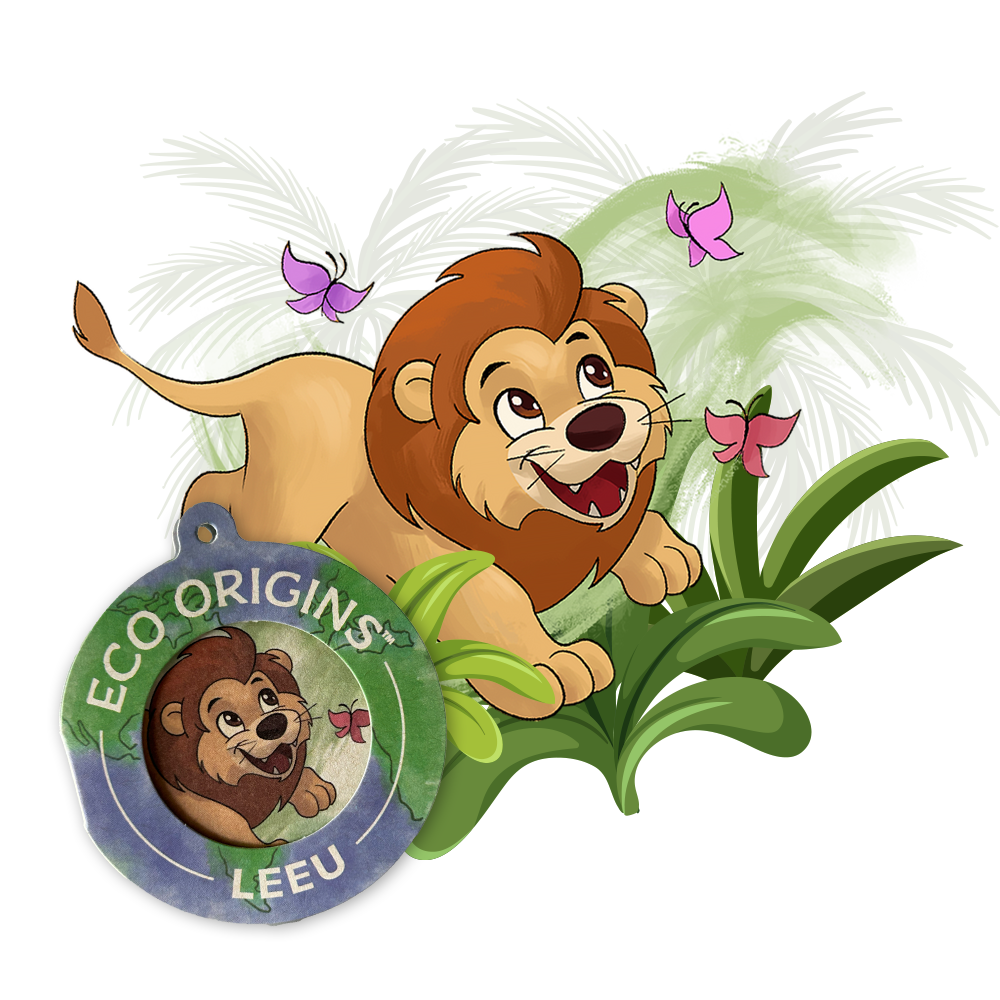
Measuring the Risk of Extinction
A species is considered critically endangered if it has lost 80% or more of its geographic range, and has a greater than 50% chance of extinction over the next 10–100 years.
There are currently no lion populations categorised as Critically Endangered. However, isolated subpopulations, such as the West African lion, face extremely high risks of extinction due to habitat loss, human-wildlife conflict, and poaching. These small groups require urgent conservation efforts to prevent their disappearance.
According to the IUCN, 0 lion populations are categorised as Critically Endangered. [source]
A species is considered endangered if it has lost more than half of its geographic range, and has a greater than 20% chance of extinction over the next 10–100 years.
Endangered lion populations, such as those in parts of Central and West Africa, have suffered significant declines due to habitat fragmentation, illegal hunting, and loss of prey species. Populations in these regions have dropped by more than 50% over the past few decades, making them a priority for conservation.
According to the IUCN, 1 subspecies of lions, the West African lion, is considered Endangered. [source]
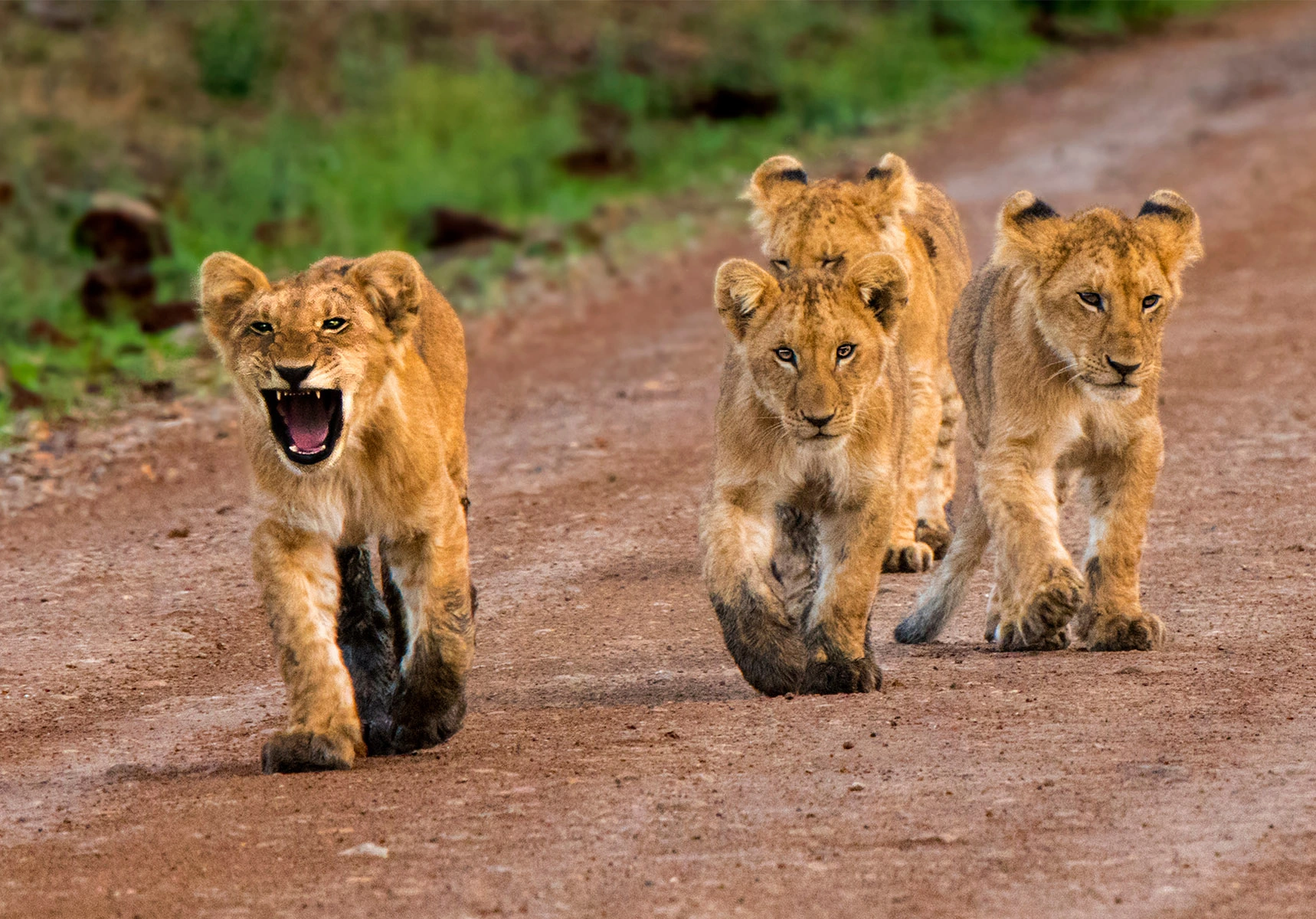
A species is considered vulnerable if there is a greater than 10% chance that it goes extinct in the wild within 100 years.
Lions as a species are currently classified as Vulnerable. With fewer than 20,000 individuals remaining in the wild, they face significant threats from habitat encroachment, poaching, and human-lion conflicts. Conservation efforts, such as creating protected areas and reducing conflicts with local communities, have been crucial to stabilizing some populations, particularly in southern and eastern Africa.
According to the IUCN, lions as a whole are listed as Vulnerable. [source]
A species is close to meeting the definition of endangered, vulnerable, or critically endangered based on recent trends.
No lion populations are currently classified as Near Threatened. While some populations in well-protected reserves are stable, the species as a whole remains under significant pressure, with trends pointing toward further declines without sustained conservation efforts.
According to the IUCN, 0 lion populations are categorized as Near Threatened. [source]
A species is widespread, abundant, and not threatened with extinction.
There are no lion populations classified as Least Concern. Despite stable populations in some areas, the species’ overall numbers and range have drastically reduced compared to historical levels, requiring continued conservation action to ensure their survival.
According to the IUCN, 0 lion populations are considered Least Concern. [source]
Measuring the Risk of Extinction
A species is considered critically endangered if it has lost 80% or more of its geographic range, and has a greater than 50% chance of extinction over the next 10–100 years.
There are currently no lion populations categorized as Critically Endangered. However, isolated subpopulations, such as the West African lion, face extremely high risks of extinction due to habitat loss, human-wildlife conflict, and poaching. These small groups require urgent conservation efforts to prevent their disappearance.
According to the IUCN, 0 lion populations are categorized as Critically Endangered. [source]
A species is considered endangered if it has lost more than half of its geographic range, and has a greater than 20% chance of extinction over the next 10–100 years.
Endangered lion populations, such as those in parts of Central and West Africa, have suffered significant declines due to habitat fragmentation, illegal hunting, and loss of prey species. Populations in these regions have dropped by more than 50% over the past few decades, making them a priority for conservation.
According to the IUCN, 1 subspecies of lions, the West African lion, is considered Endangered. [source]
A species is considered vulnerable if there is a greater than 10% chance that it goes extinct in the wild within 100 years.
Lions as a species are currently classified as Vulnerable. With fewer than 20,000 individuals remaining in the wild, they face significant threats from habitat encroachment, poaching, and human-lion conflicts. Conservation efforts, such as creating protected areas and reducing conflicts with local communities, have been crucial to stabilizing some populations, particularly in southern and eastern Africa.
According to the IUCN, lions as a whole are listed as Vulnerable.[source]
A species is close to meeting the definition of endangered, vulnerable, or critically endangered based on recent trends.
No lion populations are currently classified as Near Threatened. While some populations in well-protected reserves are stable, the species as a whole remains under significant pressure, with trends pointing toward further declines without sustained conservation efforts.
According to the IUCN, 0 lion populations are categorized as Near Threatened. [source]
A species is widespread, abundant, and not threatened with extinction.
There are no lion populations classified as Least Concern. Despite stable populations in some areas, the species’ overall numbers and range have drastically reduced compared to historical levels, requiring continued conservation action to ensure their survival.
According to the IUCN, 0 lion populations are considered Least Concern. [source]
100% Recycled: Head to Toe!
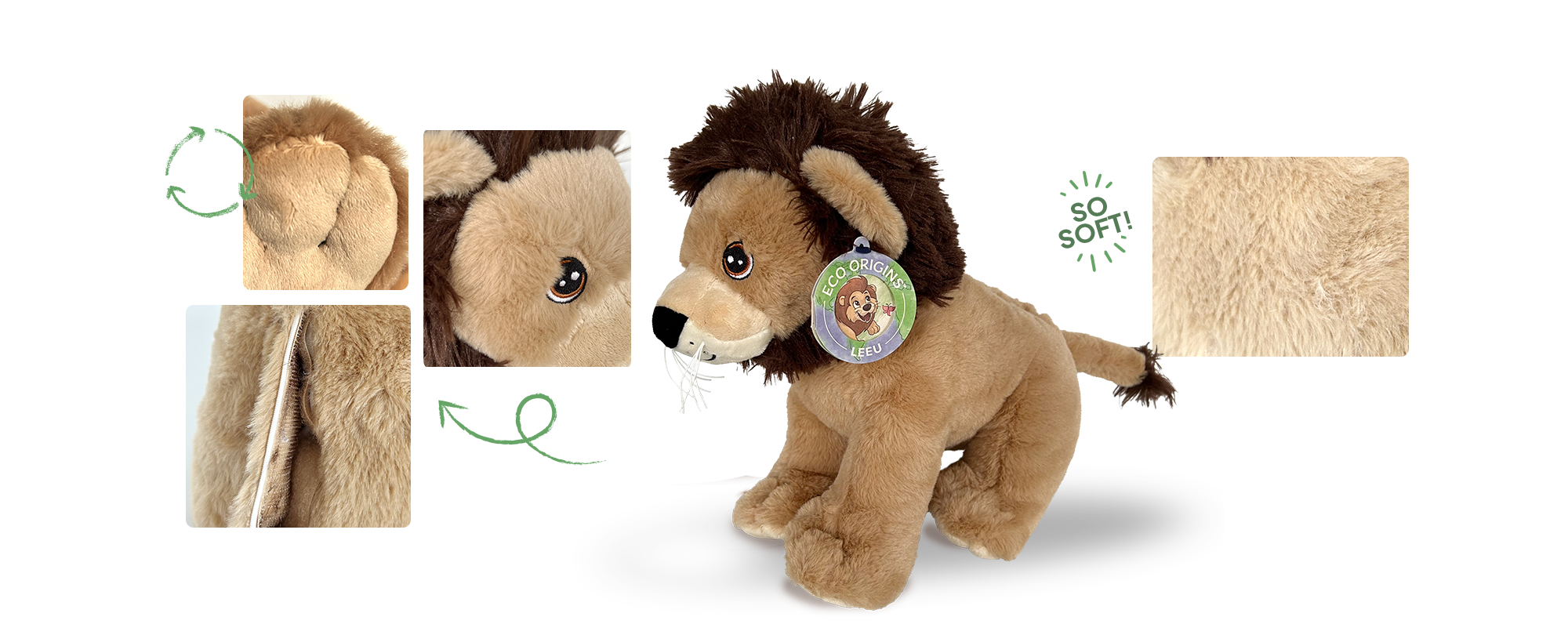
The fabric
We scour the best recycled material fabrics so that our plush always feels premium and soft to the touch!
Hang Tag
The Hangtag is made of recycled paper and attached with a Recycled Polyamide attacher.
Embroidery
Even our threads are recycled! They are extensively used in creation of adorable eyes!
Fiber Fill
What’s inside? Well it’s recycled, super soft, hypo-allergenic fiber!
Call of the Wild: Learning Den
Let’s get inspired to reconnect with nature! Discover cool facts about amazing animals, their families, and why they’re so important for keeping our planet wild and beautiful. It’s time to learn, explore, and take action to protect the incredible creatures that share our world.
12
114
50
Hear the Mighty King Roar!
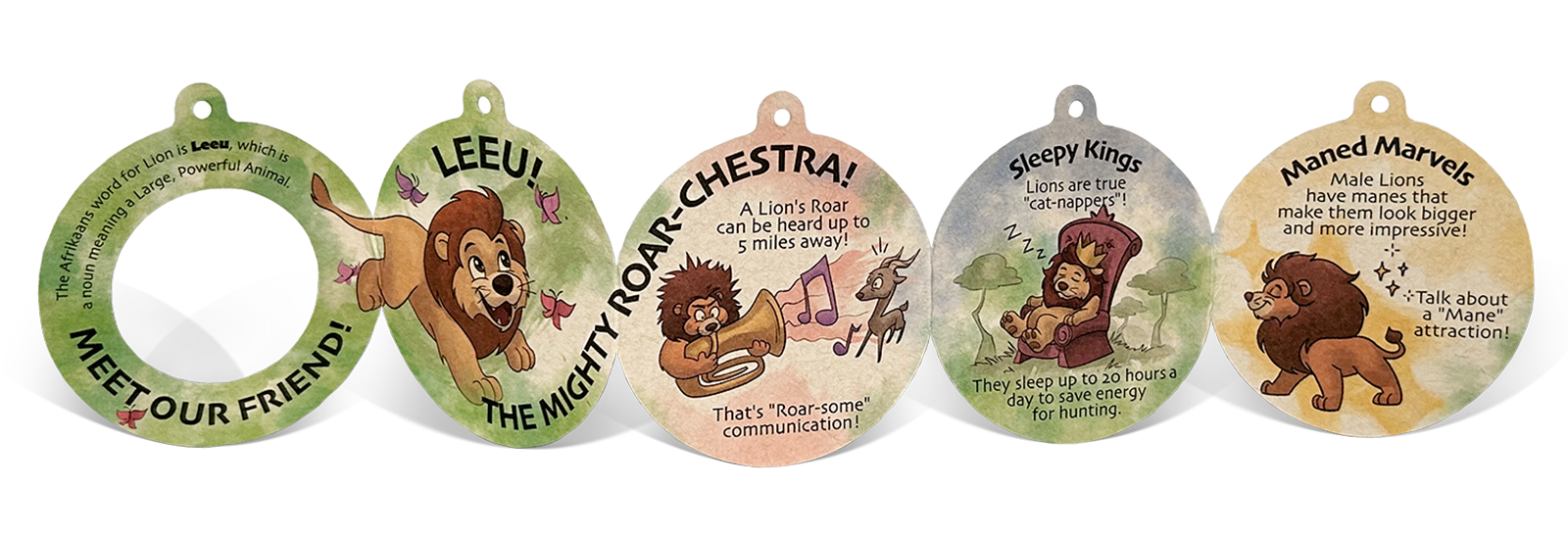
Fun Facts: Nature Nuggets!
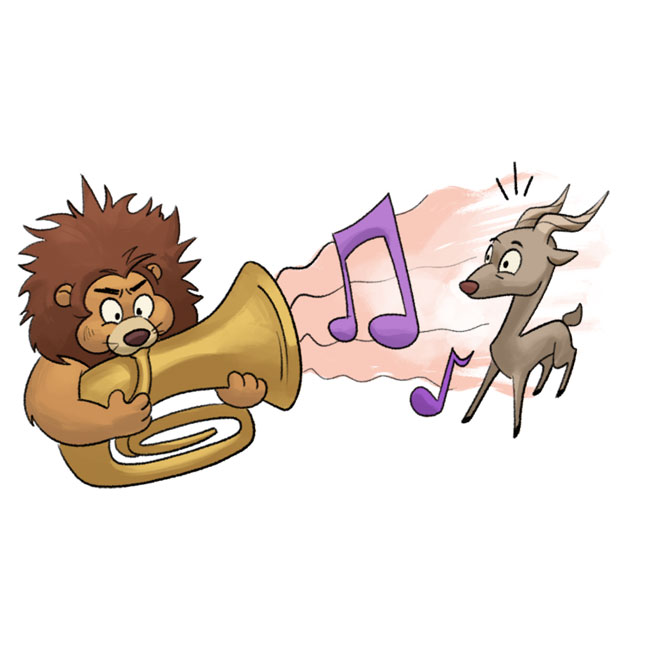
“THE MIGHTY ROAR-CHESTRA!”
A Lion’s Roar can be heard up to 5 miles away! That’s “Roar-some” communication!
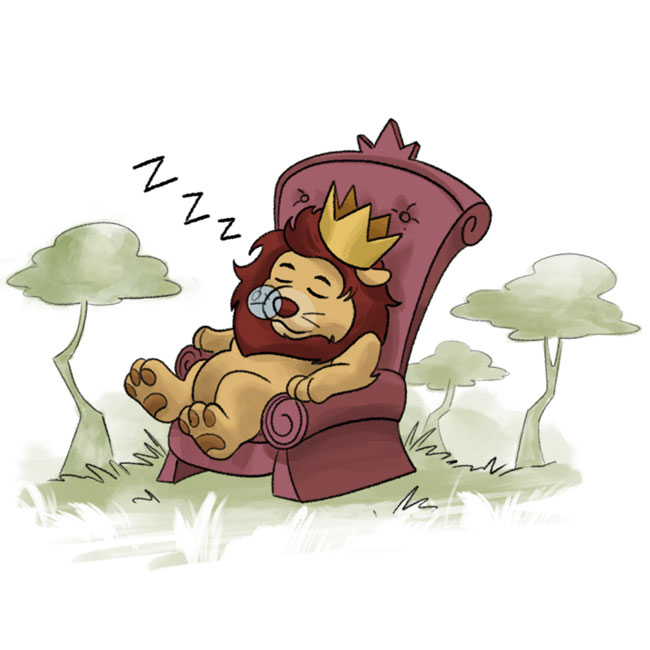
“Sleepy Kings” Lions are true “cat-nappers”! They sleep up to 20 hours a day to save energy for hunting.
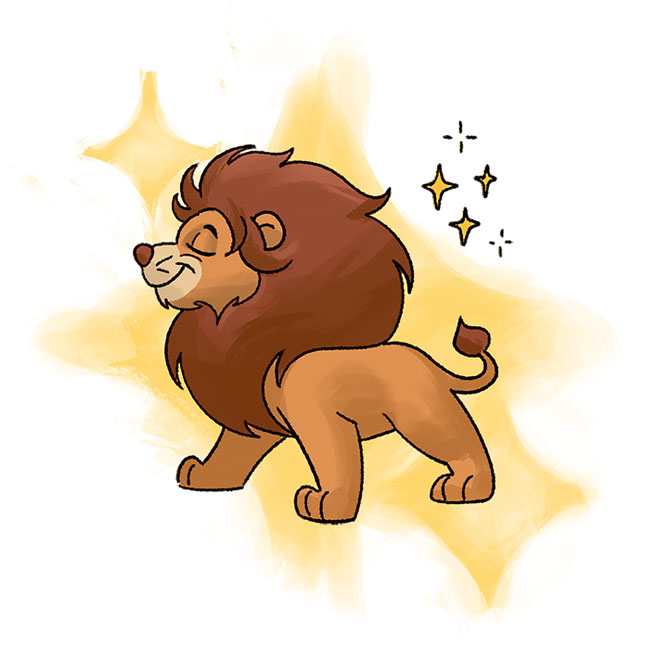
“Maned Marvels” Male Lions have manes that make them look bigger and more impressive! Talk about a “Mane” attraction!

